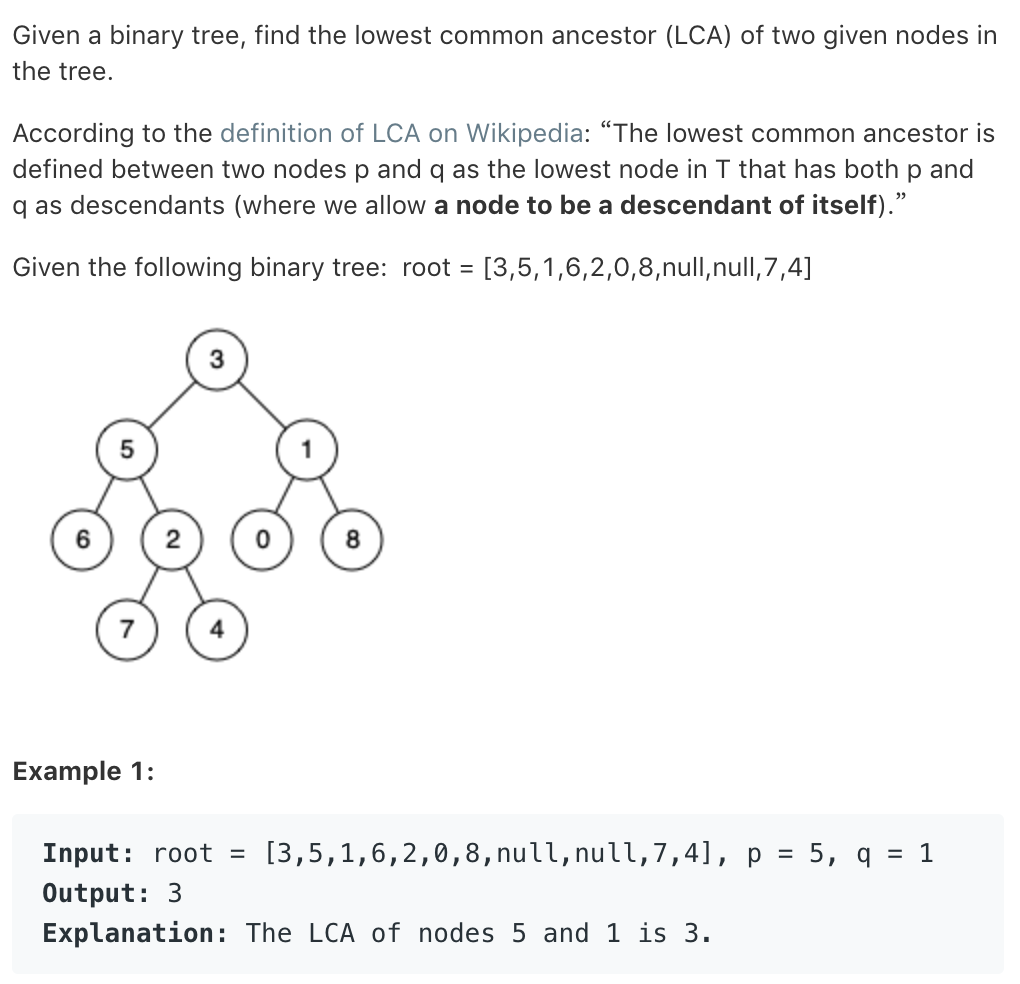
Train of thought: it is very easy to write this question through recursive thinking. Imagine a certain state, p,q on both sides of root respectively. What does that mean? Does it mean that p and q are separated at root? That's where we found it. Let's imagine that if p and q are on the same side, then we'll look for them. For example, if p and q are on the left subtree, then we'll pass down the left subtree of the root node, which is the same as the right subtree.
# Definition for a binary tree node. # class TreeNode(object): # def __init__(self, x): # self.val = x # self.left = None # self.right = None class Solution(object): def lowestCommonAncestor(self, root, p, q): """ :type root: TreeNode :type p: TreeNode :type q: TreeNode :rtype: TreeNode """ if root is None or root == p or root == q: return root left = self.lowestCommonAncestor(root.left, p , q) right = self.lowestCommonAncestor(root.right, p, q) # if left is None: # return right # elif right is None: # return left # else: # return root #In the following line, expand on (1) return right if left is None else left if right is None else root
The same way of thinking can also write 235 questions, but not a binary tree, is a binary search tree. According to the properties of binary search tree.
# Definition for a binary tree node. # class TreeNode(object): # def __init__(self, x): # self.val = x # self.left = None # self.right = None class Solution(object): def lowestCommonAncestor(self, root, p, q): """ :type root: TreeNode :type p: TreeNode :type q: TreeNode :rtype: TreeNode """ # if p.val< root.val >q.val: # return self.lowestCommonAncestor(root.left, p, q) # if p.val> root.val <q.val: # return self.lowestCommonAncestor(root.right, p, q) #return root #One line of writing, expand as above return self.lowestCommonAncestor(root.left, p, q) if p.val< root.val >q.val else self.lowestCommonAncestor(root.right, p, q) if p.val> root.val <q.val else root
#Non-recursive Writing # Definition for a binary tree node. # class TreeNode(object): # def __init__(self, x): # self.val = x # self.left = None # self.right = None class Solution(object): def lowestCommonAncestor(self, root, p, q): """ :type root: TreeNode :type p: TreeNode :type q: TreeNode :rtype: TreeNode """ while root: if p.val <root.val >q.val: root = root.left elif p.val> root.val < p.val: root = root.right else: return root